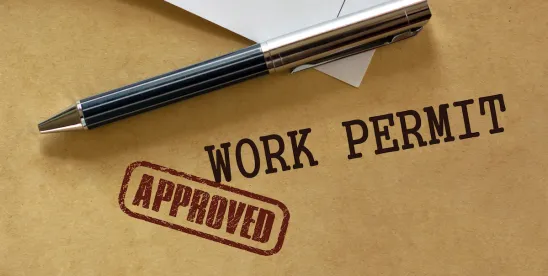There are many ways in which the U.S. immigration system is lagging behind those of other countries. We still put physical visas in passports - something Australia stopped doing nearly 10 years ago when they converted to a purely electronic visa system. Our immigration system is predominantly paper-based, with limited options for electronic filings, an area where other countries have fully embraced modern solutions. We also lag behind in other areas including processing times, expedite options, digital nomad immigration pathways, and having an immigration system responsive to changing economic needs for workers in specific occupations and sectors.
For a long time, the U.S. also lagged behind other countries when it came to supporting the immigration of dual-career couples, but that has changed over the last 10 years. This evolution was recently reinforced by the decision in Save Jobs USA v. DHS.
Since 2015, H-4 dependent spouses have been eligible for employment authorization documents (EADs) if they meet certain criteria, including being eligible for a green card but for a long wait due to annual and per-country limitations on green card approvals; criteria most H-4 spouses do not meet until they have been in the US for several years. The plaintiff in Save Jobs USA challenged this extension of work authorization as an unlawful use of the executive power of the Department of Homeland Security (DHS). On August 2, 2024, the Court of Appeals for the D.C. Circuit ruled that this was a lawful use of DHS’s power. Absent an appeal to the Supreme Court, this ends the uncertainty over H-4 EADs. This ruling, combined with a USCIS announcement in April 2024 that extended H-4 EADs for up to 540 days for those waiting for their EADs to be renewed, means that nearly 100,000 H-4 spouses can now pursue careers without fearing unexpected gaps in work authorization.
In addition, since 2021, the US has not required EADs for certain E and L spouses. Although this is not widely known (our team often gets asked about it), starting in November 2021, U.S. immigration agencies began issuing documents that allowed these spouses to work based only on their I-94 entry document, without requiring a separate EAD application. This eliminated lengthy delays and gaps in work authorization that inhibited the ability of dual-career couples to continue their dual pursuits following a relocation to the U.S. With these developments, the US is slowly aligning with other similar economies around the world that allow dependent spouses to work automatically.
There is still more progress that can be made. Currently, the Permits Foundation, an advocacy group focused on “enabling dual careers in the global workplace” characterizes 35 countries as allowing spouses or partners to work freely. The U.S. is included on that list, but the foundation notes that spouses are only allowed to work in certain categories and that work authorizations are often subject to long delays. In the U.S., access to work authorization is not available to all types of dependents. H-4 spouses are excluded until their H-1B spouse reaches a certain point in the green card process (something that takes about 4 years for many, amounting to a major career gap for a trailing spouse). Spouses of J-1 visa holders still need to apply separately for an EAD. Spouses of F-1 student visa holders are not allowed to work, even during the one to three years of post-graduation work authorization granted to international graduates of U.S. universities. We also do not grant any immigration status to unmarried partners. Although many other countries including Canada, the UK, the Netherlands, and Australia, provide an immigration path for non-married partners, there is no option for that when an unmarried couple wants to relocate together to the US (resulting in some interesting conversations and sometimes resulting in the complete cancellation of a proposed relocation). Overall, expanding work authorization to married (and even unmarried) partners of the workers already employed in the US in various non-immigrant categories could be a boon to the labor market. Our team is often asked how they can find new sources of skilled an unskilled workers to fill open positions. Expanding this avenue of work authorization would enable this latent talent pool, many of whom are already here in the US, to enter the US workforce.
Bottom line, if you are an accompanying spouse in one of the limited categories of dependents who do not need separate employment authorization (E or L), rejoice. You are probably be able to work in the US without needing anything more than the entry document issued when you arrive. If you are not one of those lucky ones, review your options with immigration counsel, and hope the U.S. continues to catch up with other immigration destinations.




 />i
/>i
